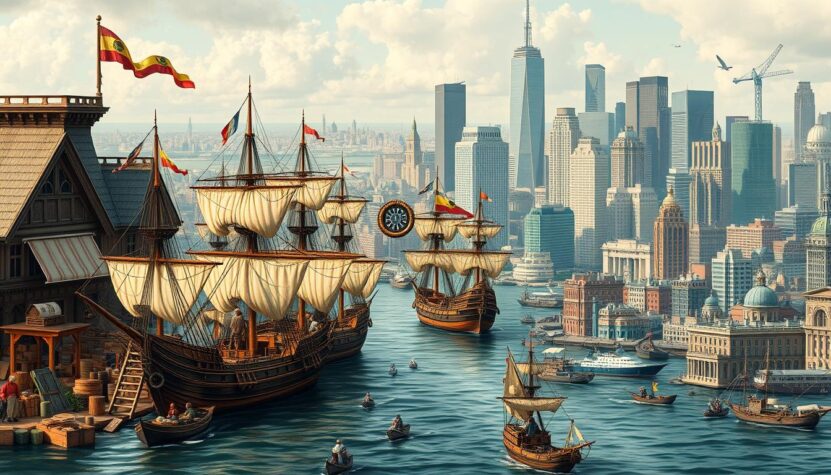In the ever-evolving landscape of global economic systems, two significant frameworks stand out: mercantilism and capitalism. Each of these systems has played a pivotal role in shaping trade practices, government policies, and economic development over centuries. This article seeks to navigate the complexities of mercantilism vs capitalism, unveiling the unique benefits and drawbacks associated with both economic paradigms.
Mercantilism emerged during the early modern period, specifically from the 16th to the 18th centuries, dominating Europe’s economic thought and practice. Rooted in the belief that a nation’s wealth was measured by its stockpile of gold and silver, this approach often involved heavy government regulation to boost domestic industries and maintain beneficial trade balances. Despite its historical significance, mercantilism fell out of favor by the 19th and 20th centuries, paving the way for liberal economic theories that emphasize free-market principles.
Conversely, capitalism arose from these liberal ideas and focuses on private ownership, the profit motive, and market coordination as fundamental components of economic activity. This modern system promotes competition, innovation, and consumer choice, often leading to significant economic growth. However, it too has its drawbacks, including economic inequality and market failures.
Understanding the intricacies of these two economic systems—examining their historical roots, key characteristics, and ongoing impacts—can empower you to engage critically with contemporary economic debates. As we delve deeper into the world of mercantilism and capitalism, you will uncover how these distinct yet interconnected systems influence today’s financial landscape.
Understanding Mercantilism
You will find that mercantilism is a significant economic doctrine that dominated the economic landscape from the 16th to the 18th centuries. Mercantilism explained its core tenet: the idea that national prosperity is best achieved by maximizing exports while minimizing imports. This belief shaped mercantilism history, resulting in a series of policies that prioritized national interests, often at the expense of free trade.
Definition and Historical Context
To truly grasp the essence of mercantilism, it’s essential to understand its historical backdrop. Emerging in Europe, this economic paradigm was a response to feudal economic structures and aimed to strengthen nations through control over trade. Notable events, such as the Navigation Act of 1651 and the Sugar Act of 1764 in Great Britain, illustrated the application of mercantilist policies. These measures increased tariffs on imports and restricted foreign competition, representing key characteristics of mercantilism.
Key Characteristics of Mercantilism
The key characteristics of mercantilism include:
- A belief in the static nature of wealth, compelling nations to accumulate resources at others’ expense.
- Emphasis on enhancing national reserves of gold and silver through trade surpluses.
- Utilization of protectionist policies, like imposing tariffs to foster domestic industries.
- State intervention to secure advantageous trade terms, sometimes leading to military engagements.
This approach often encouraged formations of monopolistic corporations, such as the British East India Company, which benefited from government-granted exclusive trade rights. Critics claimed this system imposed excessive costs on colonists, escalating dissatisfaction that eventually contributed to events like the Boston Tea Party.
Benefits of Mercantilism
Understanding the benefits of mercantilism sheds light on its lasting influences. This economic model fostered national self-sufficiency, created employment opportunities by protecting local industries, and generated governmental revenues through controlled trade practices. By establishing barriers against foreign market competition, mercantilism stimulated the growth of local industries. Furthermore, by promoting economic independence, nations could enhance their national security, reducing vulnerability to international market fluctuations.
Understanding Capitalism
You may find that capitalism serves as a defining economic system characterized by private ownership of production means. This differs significantly from mercantilism, where state control over economic processes was prevalent. In capitalism explained, market forces, especially supply and demand, play a crucial role in determining production and pricing. The evolution of this system, particularly from the eras of feudalism and mercantilism, marks a paradigm shift in economic thought and practice.
Definition and Evolution
The term “capitalism” gained traction around 1850, denoting a system founded on exclusive ownership of capital goods. Notable works, including Adam Smith’s “The Wealth of Nations,” which emerged in 1776, ushered in a new understanding of economic principles. This text detailed the transition from mercantilism to commercial capitalism, emphasizing the role of market forces in distributing goods and services.
Key Characteristics of Capitalism
- Private property rights encourage individuals and businesses to invest in their operations, fostering economic growth.
- The profit motive drives competition among entities, leading to innovations that enhance productivity and efficiency.
- Competition promotes consumer choice, ensuring that businesses strive to improve quality and service.
- Minimal state intervention allows market mechanisms to self-regulate supply and demand, consistently influencing economic activities.
Benefits and Drawbacks of Capitalism
Several notable capitalism benefits and drawbacks shape the perception of this economic system. Benefits include:
- Economic efficiency where resources are allocated in the most productive manner.
- Innovation resulting from competition that encourages development across various sectors.
- Wealth generation through active participation in the market, driving overall economic advancement.
On the contrary, capitalism presents certain drawbacks:
- Income inequality may arise, as wealth concentrates among capitalists, leaving workers marginalized.
- Potential exploitation of workers can occur when profit motives overshadow fair labor practices.
- Environmental degradation linked to unchecked production processes raises significant concerns for sustainability.

The evolution of capitalism has led to a spectrum ranging from free-market frameworks to mixed systems that still incorporate governmental regulations. Understanding these dynamics helps frame your perspective on the challenges and opportunities presented by a capitalist economic landscape.
Comparing Mercantilism vs Capitalism
The exploration of comparing capitalism and mercantilism reveals crucial insights into their fundamental differences. Each economic system presents unique characteristics and trade practices that significantly influence economic growth and development.
Fundamental Differences
One of the primary distinctions between mercantilism and capitalism lies in their approach to wealth accumulation. Mercantilism, prevalent from the 1500s until the onset of the Industrial Revolution, operates under the assumption that one nation’s economic gain comes at the expense of another. This zero-sum view contrasts sharply with capitalism, which cultivates mutual benefits and prosperity through free exchange. State intervention plays a central role in mercantilism, promoting protectionist policies that favor specific industries. In contrast, capitalism thrives on free-market principles, encouraging competition and innovation.
Trade Practices and Economic Growth
During the mercantilist era, countries like Britain, Spain, and Holland excelled in international trade, focusing on exporting more than importing to bolster national wealth. For instance, French merchants faced tariffs as high as 50 percent when trading with England in the 1600s, illustrating how mercantilist trade practices limited trade opportunities. Conversely, capitalism facilitates global trade and economic growth through agreements such as the North American Free Trade Agreement of 1994, which eliminated trade barriers between the United States, Canada, and Mexico. This transition promotes a significant increase in economic activity and an improved standard of living within capitalist economies.

Long-term Impact on Economic Systems
The long-term impact on economic systems is profound when analyzing mercantilism versus capitalism. While mercantilism laid important foundations for early economic thought, its decline ushered in an era where market-based capitalism became dominant. This shift emphasizes efficiency, innovation, and consumer welfare, thereby reshaping modern economies. The remnants of mercantilist thinking can still be observed today, particularly in discussions surrounding trade policies, highlighting the complex evolution of economic systems over time.
| Aspect | Mercantilism | Capitalism |
|---|---|---|
| Wealth Viewpoint | Zero-sum game | Mutual benefit |
| State Intervention | High | Low |
| Trade Goals | Export more than import | Free exchange of goods |
| Economic Growth | Limited | Enhanced through globalization |
| Historical Examples | Tariffs in 1600s, Methuen Treaty | NAFTA, modern trade agreements |
Conclusion
In the mercantilism vs capitalism debate, gaining insight into both economic systems reveals their unique benefits and drawbacks. Mercantilism, which flourished from the late Middle Ages until the 17th century, focused on accumulating precious metals and imposed trade restrictions that often resulted in economic stagnation. By contrast, capitalism emerged primarily as a reaction to these constraints, promoting individual freedoms, free markets, and minimal governmental involvement. Pioneered by thinkers like Adam Smith in “The Wealth of Nations,” capitalism encouraged self-regulation and emphasized the importance of trade without barriers.
By analyzing the historical contexts of mercantilism and capitalism, you can appreciate how each has shaped modern economic principles. While mercantilism aimed for a favorable balance of trade through protective policies, it sometimes stifled innovation and ultimately contributed to societal inequalities. On the other hand, capitalism has catalyzed significant economic growth and poverty reduction, though it is not without its own challenges, particularly related to income disparities and environmental concerns.
Understanding the complexities of the mercantilism vs capitalism debate is crucial for navigating today’s economic landscape. As you reflect on these differing philosophies, consider how their historical implications influence contemporary trade and economic policies. This perspective will equip you with the knowledge to make informed decisions that take into account both national interests and the global economy’s evolving dynamics.
Related Posts:
- Key Differences Between FHA and Conventional Loans Explained
- Real Estate Investment on Nusa Penida - Risks and…
- Hiring In-House or Freelancers: Pros and Cons Explained
- Why Does My Car Shake When I Drive Fast? Common…
- Greek YouTubers and the Art of Building a Loyal Fanbase
- Top 9 Trade School Careers That Will Pay Off (And…









